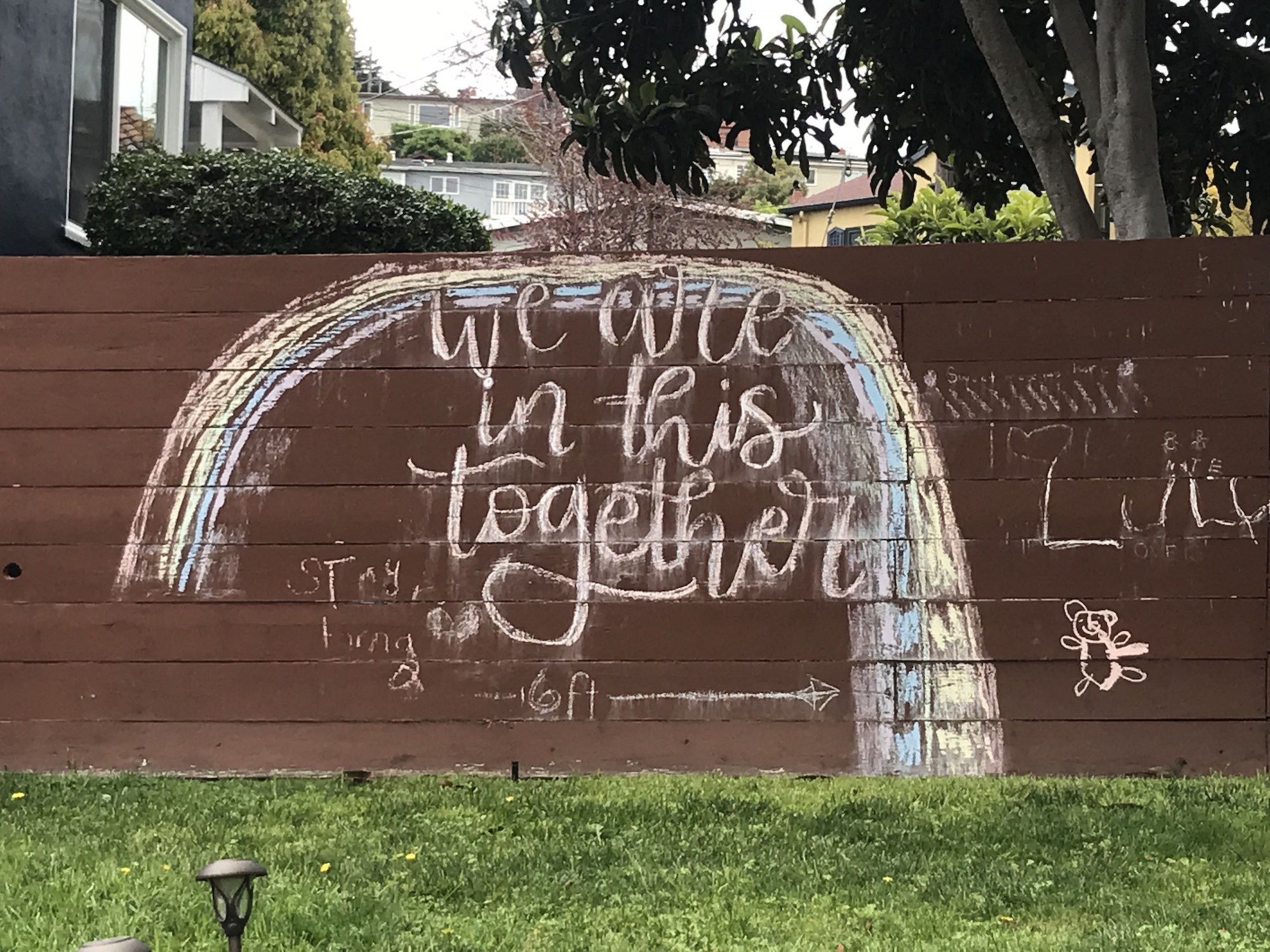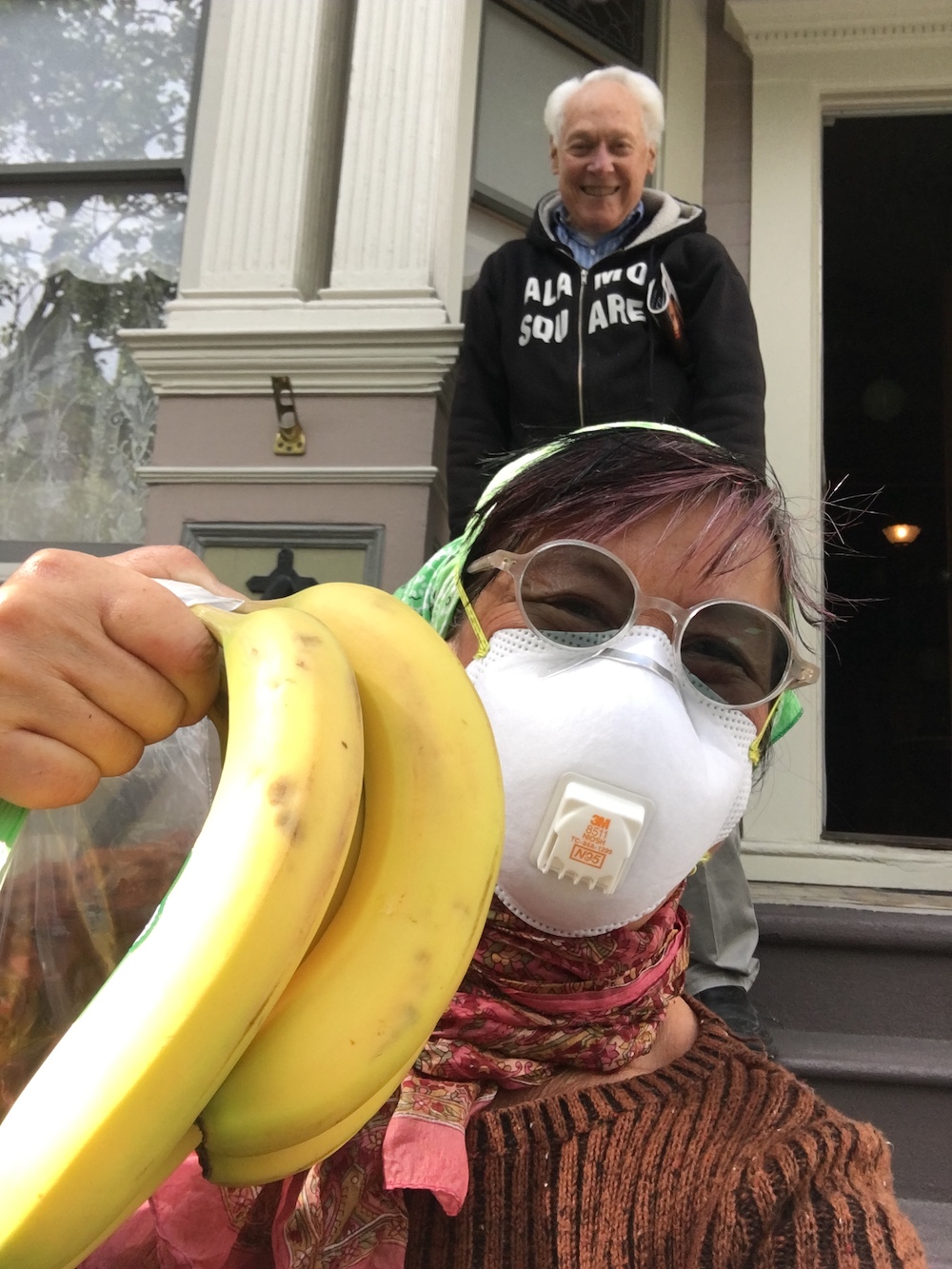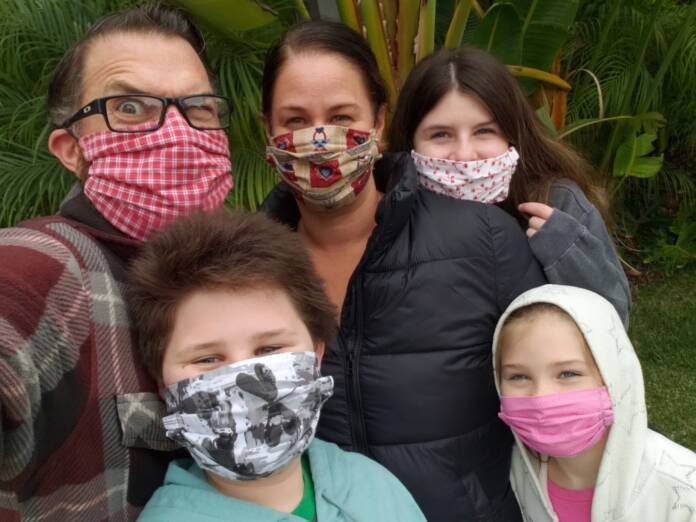Erin Garcia, director of exhibitions at the California Historical Society, and her colleagues were looking for ways to engage their audience digitally. What they came up with, the project Tell Your Story—California in the Time of COVID-19, does just that—as well as undertaking something unique for a historical society.
“This is an opportunity to document history as it’s happening,” Garcia said. “It’s a rare opportunity to focus on the present moment which is so historic.”
Right before CHS closed due to the pandemic, it hosted a show of paintings and archival material, From the Gold Rush to the Earthquake: Selections from the Collection, which included personal letters between a husband and wife during the Gold Rush. Documents like this give nuance and texture to the broader history of the period, Garcia thinks, just as individual stories from around the state give a sense of how regular people—retired, frontline workers, students, parents, those who have lost their jobs—are coping.
The stories on CHS’s website include one from a 23-year-old near Indio who lost her job and now lives with her partner’s parents, essential workers in a hard hit area of mostly farm workers. She says the food line stretches for a mile. There’s a 35-year-old new graduate nurse in Sacramento who says he feels privileged to start working in public health in the midst of a pandemic.
A 37-year-old mother of two in Tracy says her family has lost its income, and she hopes after the pandemic people will treasure their time with one another. And a 72-year-old San Francisco reverend writes about missing his grandchildren, going to the YMCA and singing with the choir. He walks five miles every morning and works on a history of the Unitarian Universalist Society of San Francisco in the afternoon—and says he knows he’s better off than many people.

Garcia says when they started collecting stories for the website, they didn’t realize how eager people would be to share.
“People need to tell somebody what’s happening to them,” she said. “They needed an outlet to say what they’re going through. This pandemic is so isolating, and people are looking for a way to connect.”
To come up with the questions, which include, “How has the COVID-19 pandemic specifically affected you, your family, or your community?” and “How do you think life will or will not be the same after we emerge from sheltering in place?,” Garcia says she and a team, including CHS’s research librarian Frances Kaplan, came up with a long list and then whittled it down to just a few.
Help us save local journalism!
Every tax-deductible donation helps us grow to cover the issues that mean the most to our community. Become a 48 Hills Hero and support the only daily progressive news source in the Bay Area.
“We wanted questions that would bring out stories and give people a lot of latitude to bring out what they want to say,” Garcia said. “One was about experiencing a personal milestone it has affected you.”
As time goes on, they’re starting to hear a lot of those stories, Garcia says, of people celebrating birthdays, graduations, weddings, and births in isolation – or dealing with a significant event like the deaths of family or friends.
“Some stories are just so sad,” she said. “There are a lot of stories of people who put relatives in the ground without being able to properly say goodbye.”

As the pandemic drags on, the tone of the stories has changed some, Garcia says, with some people addressing the protests in what they write. Now they are getting stories of people who have COVID or someone close to them has.
The stories make clear the inequities in how the virus affects people, Garcia says.
“We’ve definitely noticed a gendered division of labor and how that’s exacerbated,” she said. “With childcare and care giving, that really falls on women. It’s exposed our problems with childcare and healthcare.”
They excerpt about 250 words from the stories to put online along with a photo. With the photos – of palm trees, a suburban neighborhood and the woods – you see the geographical diversity of the state, Garcia said.
“People are taking a lot of walks now, and there’s this intense localization,” she said. “It’s interesting to see through people’s eyes what life look like for them now.”
Garcia appreciates the wide ranges of the stories.
“One woman talks about sewing masks for people working in the church kitchen, and this was early on and masks weren’t widely available,” Garcia said. “She felt for the first time like she was part of a war effort. I thought that was insightful—of course we’ve been at war, but not here. This has put Americans in an uncomfortable place.”
Share your story and a photo with the California Historical Society here





